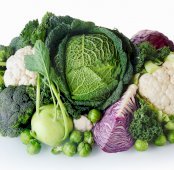Plastic is everywhere – even in our drinks
Plastic is in our drinking straws, the tags on our clothes and wrapped around our chocolate bars. But it’s also in our food, tap water and, increasingly, our lungs, writes Amanda Young.
About 40 per cent of all plastic produced is single-use, and most of it can be found in packaging. Of all the virgin plastic ever produced – about 8.3 billion tonnes – more than 6 billion tonnes have become waste. This sets off a butterfly effect as microplastics find their way into water, soil and air. They end up, among other places, in the fish we eat, the honey we consume and the water we drink. In fact, 83 per cent of tap water worldwide, and as much as 94 per cent of the US supply, contains microplastics.
The scientific community continues to study and report the potential harm of plastic use and dependence. And public awareness has spiked in recent years, owing in part to popular documentaries. This has put pressure on governments and companies to find alternatives and solutions, particularly surrounding single-use plastics. India, for example, has banned all single-use plastics by 2022. And 40 UK companies committed to a Plastic Pact in 2018, with the goal of eliminating unnecessary single-use plastic by 2025.
But, in spite of scientific studies, public awareness and corporate and governmental initiatives, the fact remains that plastic is cheap. Traditional plastic is, unfortunately, more efficient than many of its bio-plastic counterparts. It’s light, low-cost and great at protecting food and products. Biodegradable and compostable plastics are more sustainable, but they’re also more expensive. The bottom line is that customers are often unwilling to pay more.
Companies have also pointed out that there are limited composting facilities for biodegradable plastics and some may present contamination issues. Many sustainable plastic companies are also vague about how they intend to absorb additional costs.
Because plastic alternatives are off to a somewhat slow start, there is renewed interest in recycling efforts. Consumers and companies are asking how we can improve current recycling practices, so that we can increase the value of products to their end of their lives.
As companies continue to address the problems of global reliance on single-use plastic, there will be new risks and opportunities. Risks exist for plastic manufacturers involved in packaging. Oil and gas companies also face risks. Additionally, there could be unintended consequences from a rapid move away from plastics. These include worse environmental outcomes, greenwashing (companies making false claims about a product’s environmental credentials), plastic black markets and health risks.
Opportunities exist for bioplastics manufacturers, waste and recycling companies and consumer companies. The bioplastic market is expected to have grown 30 per cent annually from 2013 to 2030, versus an average 3 per cent growth for fossil-based plastic. And there may be exciting growth opportunities with the development of new disruptive technologies aimed at reducing single-use plastic dependency. Waste and recycling companies searching for solutions to extend the value of products throughout their lifespans may also provide investment opportunity.
These possible solutions also align with some of the key tenets of the United Nations’ (UN) Sustainable Development Goals (SDGs). These goals include addressing a number of challenges including climate change, human rights and community growth and development. Finding ways to reduce microplastics’ presence in our air, water and ultimately our bodies meshes with the UN goals to ensure good health and wellbeing for all, provide clean water, use responsible consumption and production processes and to protect life below water and on land.
These goals, in turn, provide a means of measurement. A company can be quantitatively assessed based on its pursuit of and ability to meet the UN SDGs. This framework may help unlock impact investing for mainstream investors and strengthens the case single-use plastic solutions.
While the plastic problem is ongoing for the foreseeable future, it presents opportunity – and necessity – to innovate.
Amanda Young (pictured) is the head of global ESG research at Aberdeen Standard Investments.
popular
daily wisdom
“Kindness is the language that the deaf can hear and the blind can see.” – Mark Twain



_174_170_0c04.png)



